Embattlement Through Judeo-Christian Rhetoric, Then and Now
 In American politics the term “Judeo-Christian,” and its associated discourse and diplomatic behavior, has usually functioned to include or exclude certain people in the name of “uniquely” American democracy. In this paper I argue that Judeo-Christian rhetoric as the Trump administration and its current allies use it has its origins in the 1960s to 1980s, when the New Christian Right formed a political front through charismatic public figures and organizations like the Moral Majority. Mid-twentieth-century evangelicals used Judeo-Christian terminology and frameworks to shore up their sense of embattlement, their idea that evangelicals are culturally and politically under attack because they defend the threatened moral standards of the United States. Evangelicals not only identified Jews and Christians as true Americans, but also tied themselves to Jews in order to heighten their sense of persecution. By examining the politics of this administration through its communications and policies, I show how Judeo-Christian rhetoric and embattlement remain inseparably intertwined after the rise of the Religious Right. The Trump administration uses Judeo-Christian buzzwords to legitimize its own sense of embattlement, and to make itself appealing to a white evangelical voter base. In American politics the term “Judeo-Christian,” and its associated discourse and diplomatic behavior, has usually functioned to include or exclude certain people in the name of “uniquely” American democracy. In this paper I argue that Judeo-Christian rhetoric as the Trump administration and its current allies use it has its origins in the 1960s to 1980s, when the New Christian Right formed a political front through charismatic public figures and organizations like the Moral Majority. Mid-twentieth-century evangelicals used Judeo-Christian terminology and frameworks to shore up their sense of embattlement, their idea that evangelicals are culturally and politically under attack because they defend the threatened moral standards of the United States. Evangelicals not only identified Jews and Christians as true Americans, but also tied themselves to Jews in order to heighten their sense of persecution. By examining the politics of this administration through its communications and policies, I show how Judeo-Christian rhetoric and embattlement remain inseparably intertwined after the rise of the Religious Right. The Trump administration uses Judeo-Christian buzzwords to legitimize its own sense of embattlement, and to make itself appealing to a white evangelical voter base.
|
Divergence of Theology, Similarity of Method: Nineteenth-Century Anglican Religious Conflict and the Formation of Church Parties
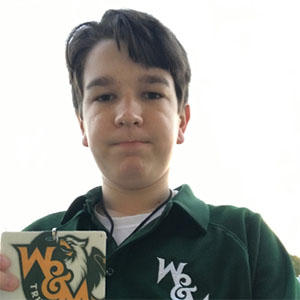 In nineteenth-century England, as the Church of England’s long-established ties to the monarchy began to unravel, a group of Anglicans from Oriel College, Oxford launched the Oxford Movement. This theological campaign, also known as Tractarianism, defined Anglicanism according to writings from the early church and apostolic succession, the belief that the Church’s bishops could trace their ordinations back to the Apostles. During the same time period, however, Anglican Evangelicals emphasized the supremacy of the Bible above all other sources of authority and the doctrine of salvation by faith in Christ alone as the cornerstones of Anglicanism. Despite their differences, Evangelicals and Tractarians used similar methods to assert their visions for the Church. A spirit of revival permeated both, as they sought to win believers’ loyalties and give new life to stagnant institutions. In service of these goals, both engaged in direct evangelism, built new churches, and established religious societies that translated writings of figures they considered forefathers. Both parties defined their Anglican faith as the logical culmination of a theological past with no need for alliances with the state, and their various ventures served as means to that end. In this article, I use theological writings from nineteenth-century figures in both factions and secondary historical sources about Anglican theology and church-state relations in England to explore the cultural and religious factors that influenced the divergence of the two factions’ theologies yet propelled them toward similar outreach techniques. I show that the Church’s declining support from the English state opened a vacuum of identity that was filled by innovative movements that established a historical and theological identity for the Church independent of the state, a mission which both Evangelicals and Tractarians undertook. An environment of heightened religious tensions prompted each camp to place an emphasis on institutional revival and intellectual rigor, leading to similar approaches to theology and mission. In nineteenth-century England, as the Church of England’s long-established ties to the monarchy began to unravel, a group of Anglicans from Oriel College, Oxford launched the Oxford Movement. This theological campaign, also known as Tractarianism, defined Anglicanism according to writings from the early church and apostolic succession, the belief that the Church’s bishops could trace their ordinations back to the Apostles. During the same time period, however, Anglican Evangelicals emphasized the supremacy of the Bible above all other sources of authority and the doctrine of salvation by faith in Christ alone as the cornerstones of Anglicanism. Despite their differences, Evangelicals and Tractarians used similar methods to assert their visions for the Church. A spirit of revival permeated both, as they sought to win believers’ loyalties and give new life to stagnant institutions. In service of these goals, both engaged in direct evangelism, built new churches, and established religious societies that translated writings of figures they considered forefathers. Both parties defined their Anglican faith as the logical culmination of a theological past with no need for alliances with the state, and their various ventures served as means to that end. In this article, I use theological writings from nineteenth-century figures in both factions and secondary historical sources about Anglican theology and church-state relations in England to explore the cultural and religious factors that influenced the divergence of the two factions’ theologies yet propelled them toward similar outreach techniques. I show that the Church’s declining support from the English state opened a vacuum of identity that was filled by innovative movements that established a historical and theological identity for the Church independent of the state, a mission which both Evangelicals and Tractarians undertook. An environment of heightened religious tensions prompted each camp to place an emphasis on institutional revival and intellectual rigor, leading to similar approaches to theology and mission.
|
Remnants of Jewish Life in Warsaw and Krakow, Poland: Pre-War Presence, Memorialization, and Criticisms
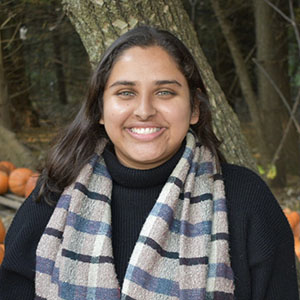 Once the epicenter of Eastern European Jewry, Nazi occupation of Poland and the murder of almost all of its Jews left the country dilapidated and filled with physical remnants of the concentration camps. The myth of a heroic, Catholic Pole and, in direct opposition, the meek Jew encapsulated Polish memories of the war, while Polish complicity in genocide defined diaspora Jewish tropes of native Poles. The post-war Communist government rapidly created memorials emphasizing hegemonic, shared suffering, refusing to acknowledge the unequal persecution and murder faced by Jewish Poles. Communist messaging insisted that Nazi occupation and murder had been a necessary burden to bring communism to a previously democratic Poland. This thinking cultivated a national memorialization scheme highlighting only Polish heroes and their courage to build a Communist Poland, thereby alienating the few remaining Polish Jews. Using the cities of Krakow and Warsaw as case studies, I analyze how each cities’ pre-war Jewish presence and the level of damage suffered at the hands of the Nazis shaped differences in their memorials. I argue that the post-Communist memorials that utilize a framework emphasizing the integral nature of Jewish Polish history within the larger history of the Polish people are able to reinforce two important concepts: Jews faced unequal persecution by the Nazis in comparison with ethnic Poles, and Jewish cultural history in Poland extends beyond Jewish persecution during World War II. Memorials created under the umbrella of this framework create spaces to acknowledge a painful history and can generate a more tolerant vision of the future. Once the epicenter of Eastern European Jewry, Nazi occupation of Poland and the murder of almost all of its Jews left the country dilapidated and filled with physical remnants of the concentration camps. The myth of a heroic, Catholic Pole and, in direct opposition, the meek Jew encapsulated Polish memories of the war, while Polish complicity in genocide defined diaspora Jewish tropes of native Poles. The post-war Communist government rapidly created memorials emphasizing hegemonic, shared suffering, refusing to acknowledge the unequal persecution and murder faced by Jewish Poles. Communist messaging insisted that Nazi occupation and murder had been a necessary burden to bring communism to a previously democratic Poland. This thinking cultivated a national memorialization scheme highlighting only Polish heroes and their courage to build a Communist Poland, thereby alienating the few remaining Polish Jews. Using the cities of Krakow and Warsaw as case studies, I analyze how each cities’ pre-war Jewish presence and the level of damage suffered at the hands of the Nazis shaped differences in their memorials. I argue that the post-Communist memorials that utilize a framework emphasizing the integral nature of Jewish Polish history within the larger history of the Polish people are able to reinforce two important concepts: Jews faced unequal persecution by the Nazis in comparison with ethnic Poles, and Jewish cultural history in Poland extends beyond Jewish persecution during World War II. Memorials created under the umbrella of this framework create spaces to acknowledge a painful history and can generate a more tolerant vision of the future.
|
Black Protestantism in Post-Emancipation America
 Protestant Christianity has long been a powerful force for uniting and empowering communities of Black Americans across the United States. Following the legal abolition of chattel slavery, Black Americans experienced a marked increase in their ability to exercise their religious and social agency, and as a result, they were able to shape their relationship with Protestantism in a manner largely independent of white influence, thus giving Protestantism increasingly significant implications for Black cultural identities. In this course, we will explore the ways in which Black Americans incorporated Protestantism into their identity as members of the African diaspora after emancipation. Drawing from historical accounts of the practice of Black Protestantism throughout the history of the United States, we will learn about how despite Protestantism’s European origins, Black Americans have crafted Black Protestantism to be a religion that recognizes their unique history and celebrates their cultural identity as both African and American. Protestant Christianity has long been a powerful force for uniting and empowering communities of Black Americans across the United States. Following the legal abolition of chattel slavery, Black Americans experienced a marked increase in their ability to exercise their religious and social agency, and as a result, they were able to shape their relationship with Protestantism in a manner largely independent of white influence, thus giving Protestantism increasingly significant implications for Black cultural identities. In this course, we will explore the ways in which Black Americans incorporated Protestantism into their identity as members of the African diaspora after emancipation. Drawing from historical accounts of the practice of Black Protestantism throughout the history of the United States, we will learn about how despite Protestantism’s European origins, Black Americans have crafted Black Protestantism to be a religion that recognizes their unique history and celebrates their cultural identity as both African and American.
|
Day by Day: The Impact of 1970s American Religiosity on Musical Theater
 The 1970s saw the creation of religious-toned American musicals. This podcast connects this phenomenon to the political and cultural climate of the time. The post-World War II wave of religious fervor in America which reached its peak in the 1970s, created an especially ripe platform for religious stories in American musicals, as can be seen with the meteoric rise of Godspell and Jesus Christ Superstar, both opening in 1971. Newsweek labeled 1976 “The Year of the Evangelical” because large numbers of Americans began to identify as such. Presidential elections, such as that of Jimmy Carter, turned religious, invoking prayers to God on the campaign trail and fighting for national days of prayer. To explain this occurrence, I analyze historical events and records, as well as reviews and public reception from the original productions of Godspell and Jesus Christ Superstar. I show that American musical theater integrated itself with religion as a means to attract audiences and sell tickets; I also show though the creators of these shows were religiously apathetic, religious conversions still occurred for some audiences. This matters because it highlights that religious experiences can occur and are not inhibited by art produced by non-religious creators. The 1970s saw the creation of religious-toned American musicals. This podcast connects this phenomenon to the political and cultural climate of the time. The post-World War II wave of religious fervor in America which reached its peak in the 1970s, created an especially ripe platform for religious stories in American musicals, as can be seen with the meteoric rise of Godspell and Jesus Christ Superstar, both opening in 1971. Newsweek labeled 1976 “The Year of the Evangelical” because large numbers of Americans began to identify as such. Presidential elections, such as that of Jimmy Carter, turned religious, invoking prayers to God on the campaign trail and fighting for national days of prayer. To explain this occurrence, I analyze historical events and records, as well as reviews and public reception from the original productions of Godspell and Jesus Christ Superstar. I show that American musical theater integrated itself with religion as a means to attract audiences and sell tickets; I also show though the creators of these shows were religiously apathetic, religious conversions still occurred for some audiences. This matters because it highlights that religious experiences can occur and are not inhibited by art produced by non-religious creators.
|
The “Religious” Syndicate: CCP Eradication of Uighur Muslims and Incorporation of Chinese Buddhists within Mainland China
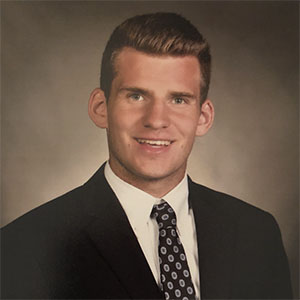 Historically, the Chinese Communist Party (CCP) has sought to undermine religious groups within its borders. These religious groups pose a threat to the internal sovereignty of the CCP because they have the potential to challenge communist doctrine, question authoritarian leaders, and undermine China’s political system. Consequently, Chinese officials have employed tactics that either eradicated religious groups or adapted them into its political system. Xi Jinping has continued this tradition during his tenure as the president of the People’s Republic of China. In this paper, I will identify which of the seven religious dimensions influence CCP logic regarding religious policy, and I will corelate my findings with the historical record of Uighur Muslims and Chinese Buddhists. I will also show that religious doctrine can be harmonious with CCP propaganda, in opposition with CCP propaganda, or ambiguous in regard to CCP propaganda. Using CCP, American State Department, and United Nations documents as evidence, I assert that the doctrinal, ethical, ritual, material, and institutional dimensions of religion have the most profound influence on the Chinese Communist Party’s logic. Historically, the Chinese Communist Party (CCP) has sought to undermine religious groups within its borders. These religious groups pose a threat to the internal sovereignty of the CCP because they have the potential to challenge communist doctrine, question authoritarian leaders, and undermine China’s political system. Consequently, Chinese officials have employed tactics that either eradicated religious groups or adapted them into its political system. Xi Jinping has continued this tradition during his tenure as the president of the People’s Republic of China. In this paper, I will identify which of the seven religious dimensions influence CCP logic regarding religious policy, and I will corelate my findings with the historical record of Uighur Muslims and Chinese Buddhists. I will also show that religious doctrine can be harmonious with CCP propaganda, in opposition with CCP propaganda, or ambiguous in regard to CCP propaganda. Using CCP, American State Department, and United Nations documents as evidence, I assert that the doctrinal, ethical, ritual, material, and institutional dimensions of religion have the most profound influence on the Chinese Communist Party’s logic.
|
The Chairman’s image: body politics and reduced authority
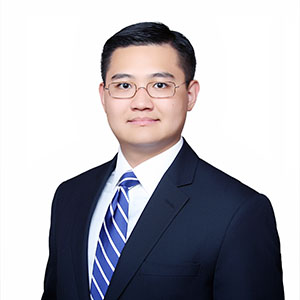 Chairman Mao Zedong, as poster makers during the Cultural Revolution (1966-1976) would address him with adoration as “the Red Sun” and “the Great Helmsman” rose in prominence and popularity through the years of Communist’ competing for power with the Nationalists following the Chinese Civil War. He solidified his mass following during the Cultural Revolution starting in 1966. The party newspaper People’s Daily aided Mao’s popularity, which proclaimed that Mao embodied “making revolution” through “making revolution” just like learning to swim by swimming. Mao’s image was ubiquitous on badges, book covers and posters during his lifetime and achieved popularity overseas after Andy Warhol made a colorful collage of Mao in 1972, three years before Mao’s death in 1976. After his death, Mao’s image appeared on souvenir items and actors impersonated him on screen at both national and local levels. The Party’s propaganda arm curates presentations on screen and literatures carefully. Local government bureaucrats, however hold mixed attitude to local level impersonating performances. In some instances local government agencies invite impersonators to perform at government functions; while at other situations local bureaucrats put a stop on impersonator’s public performances. The body and image of Mao embody different revolutionary ideas and focus through times. The audience and the impersonators cherry-pick some elements in Mao that fit their tastes taste or memory. In this case, Judith Butler’s drag and performative knowledge theory is applicable. I will show that impersonators’ performances and souvenir iconography are means of alternative expressions branching off Mao’s revolutionary proclamation. The contrast in Mao’s impersonation cases brings a level of ridicule, and therefore undermines Mao’s memory in China as Mao intended his body politics when he was alive and the performance images that extended after his death to carry on Mao’s revolutionary legacy. Chairman Mao Zedong, as poster makers during the Cultural Revolution (1966-1976) would address him with adoration as “the Red Sun” and “the Great Helmsman” rose in prominence and popularity through the years of Communist’ competing for power with the Nationalists following the Chinese Civil War. He solidified his mass following during the Cultural Revolution starting in 1966. The party newspaper People’s Daily aided Mao’s popularity, which proclaimed that Mao embodied “making revolution” through “making revolution” just like learning to swim by swimming. Mao’s image was ubiquitous on badges, book covers and posters during his lifetime and achieved popularity overseas after Andy Warhol made a colorful collage of Mao in 1972, three years before Mao’s death in 1976. After his death, Mao’s image appeared on souvenir items and actors impersonated him on screen at both national and local levels. The Party’s propaganda arm curates presentations on screen and literatures carefully. Local government bureaucrats, however hold mixed attitude to local level impersonating performances. In some instances local government agencies invite impersonators to perform at government functions; while at other situations local bureaucrats put a stop on impersonator’s public performances. The body and image of Mao embody different revolutionary ideas and focus through times. The audience and the impersonators cherry-pick some elements in Mao that fit their tastes taste or memory. In this case, Judith Butler’s drag and performative knowledge theory is applicable. I will show that impersonators’ performances and souvenir iconography are means of alternative expressions branching off Mao’s revolutionary proclamation. The contrast in Mao’s impersonation cases brings a level of ridicule, and therefore undermines Mao’s memory in China as Mao intended his body politics when he was alive and the performance images that extended after his death to carry on Mao’s revolutionary legacy.
|
Exploring the Comparative Development of the Saudi and Iranian Ulama
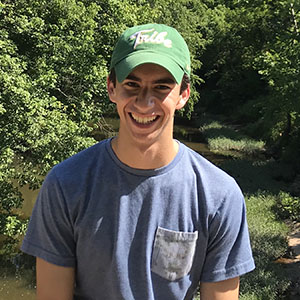 In the Islamic tradition, the ulama was responsible for matters relating to jurisprudence and social practice within the Caliphates of the classical period. The ulama could not prevent fracturing within the ummah (followers of the Prophet), and among its members, resulting in the split between Sunni and Shia and a proliferation of schools of jurisprudence. Following the Shia schism, two groups of ulama emerged and claimed hegemony over their respective traditions: the Hanbali-Wahhabi Sunni ulama of Saudi Arabia and the Usuli Shia ulama of Iran. Forged in distinct historical contexts yet in many ways mirror images of one another, these two groups claim to assert authority over Sunnis and Twelver Shi’ites worldwide. Through a comparative study of the parallel histories of these groups, accounting for geopolitical, socio-religious, and economic events since the early 1800s, I will demonstrate multilayered animosity between the groups has real-world policy implications for the nation-states of Saudi Arabi and Iran in the modern world. The theology and ideology of Shi’ism as a persecuted and martyred minority has turned the Iranian ulama aggressively anti-Sunni, and given their close connections to power in the modern world, this has greatly affected their interactions with neighboring states. As the most conservative ulama in the Sunni tradition, Saudi ulama have felt it their personal responsibility to target Shia (and thus Iranian) heresy, translating once again into real geopolitical action in the Middle East. In the Islamic tradition, the ulama was responsible for matters relating to jurisprudence and social practice within the Caliphates of the classical period. The ulama could not prevent fracturing within the ummah (followers of the Prophet), and among its members, resulting in the split between Sunni and Shia and a proliferation of schools of jurisprudence. Following the Shia schism, two groups of ulama emerged and claimed hegemony over their respective traditions: the Hanbali-Wahhabi Sunni ulama of Saudi Arabia and the Usuli Shia ulama of Iran. Forged in distinct historical contexts yet in many ways mirror images of one another, these two groups claim to assert authority over Sunnis and Twelver Shi’ites worldwide. Through a comparative study of the parallel histories of these groups, accounting for geopolitical, socio-religious, and economic events since the early 1800s, I will demonstrate multilayered animosity between the groups has real-world policy implications for the nation-states of Saudi Arabi and Iran in the modern world. The theology and ideology of Shi’ism as a persecuted and martyred minority has turned the Iranian ulama aggressively anti-Sunni, and given their close connections to power in the modern world, this has greatly affected their interactions with neighboring states. As the most conservative ulama in the Sunni tradition, Saudi ulama have felt it their personal responsibility to target Shia (and thus Iranian) heresy, translating once again into real geopolitical action in the Middle East.
|
A “Just War”: Japan and the Development of Religious Violence during WWII
 This podcast investigates the case of religiously motivated violence in Japan leading up to, during and after World War II. To show how religious violence played out in both the political and religious spheres during this era, I examine the stories of Tojo Hideki and Nichi’i Fukushima. I also look at the aftermath of waging a “just war” in Japan, and explore why Japan has avoided apologizing or admitting guilt for actions taken during the war. After the war, there were many war trials and hearings about Japan’s actions during the war. This also began a period of American occupation that lasted for three decades. In this time the apologies from the Japanese government and religious laity for crimes that were committed during the war were slow and in some cases nonexistent. I argue that two reasons for this were the way that the trials and hearings were conducted - in an anti-Japanese, pro-American way - and the continued lack of admission of guilt from America for the crimes it committed against Japan. This podcast investigates the case of religiously motivated violence in Japan leading up to, during and after World War II. To show how religious violence played out in both the political and religious spheres during this era, I examine the stories of Tojo Hideki and Nichi’i Fukushima. I also look at the aftermath of waging a “just war” in Japan, and explore why Japan has avoided apologizing or admitting guilt for actions taken during the war. After the war, there were many war trials and hearings about Japan’s actions during the war. This also began a period of American occupation that lasted for three decades. In this time the apologies from the Japanese government and religious laity for crimes that were committed during the war were slow and in some cases nonexistent. I argue that two reasons for this were the way that the trials and hearings were conducted - in an anti-Japanese, pro-American way - and the continued lack of admission of guilt from America for the crimes it committed against Japan.
|















 In American politics the term “Judeo-Christian,” and its associated discourse and diplomatic behavior, has usually functioned to include or exclude certain people in the name of “uniquely” American democracy. In this paper I argue that Judeo-Christian rhetoric as the Trump administration and its current allies use it has its origins in the 1960s to 1980s, when the New Christian Right formed a political front through charismatic public figures and organizations like the Moral Majority. Mid-twentieth-century evangelicals used Judeo-Christian terminology and frameworks to shore up their sense of embattlement, their idea that evangelicals are culturally and politically under attack because they defend the threatened moral standards of the United States. Evangelicals not only identified Jews and Christians as true Americans, but also tied themselves to Jews in order to heighten their sense of persecution. By examining the politics of this administration through its communications and policies, I show how Judeo-Christian rhetoric and embattlement remain inseparably intertwined after the rise of the Religious Right. The Trump administration uses Judeo-Christian buzzwords to legitimize its own sense of embattlement, and to make itself appealing to a white evangelical voter base.
In American politics the term “Judeo-Christian,” and its associated discourse and diplomatic behavior, has usually functioned to include or exclude certain people in the name of “uniquely” American democracy. In this paper I argue that Judeo-Christian rhetoric as the Trump administration and its current allies use it has its origins in the 1960s to 1980s, when the New Christian Right formed a political front through charismatic public figures and organizations like the Moral Majority. Mid-twentieth-century evangelicals used Judeo-Christian terminology and frameworks to shore up their sense of embattlement, their idea that evangelicals are culturally and politically under attack because they defend the threatened moral standards of the United States. Evangelicals not only identified Jews and Christians as true Americans, but also tied themselves to Jews in order to heighten their sense of persecution. By examining the politics of this administration through its communications and policies, I show how Judeo-Christian rhetoric and embattlement remain inseparably intertwined after the rise of the Religious Right. The Trump administration uses Judeo-Christian buzzwords to legitimize its own sense of embattlement, and to make itself appealing to a white evangelical voter base. In nineteenth-century England, as the Church of England’s long-established ties to the monarchy began to unravel, a group of Anglicans from Oriel College, Oxford launched the Oxford Movement. This theological campaign, also known as Tractarianism, defined Anglicanism according to writings from the early church and apostolic succession, the belief that the Church’s bishops could trace their ordinations back to the Apostles. During the same time period, however, Anglican Evangelicals emphasized the supremacy of the Bible above all other sources of authority and the doctrine of salvation by faith in Christ alone as the cornerstones of Anglicanism. Despite their differences, Evangelicals and Tractarians used similar methods to assert their visions for the Church. A spirit of revival permeated both, as they sought to win believers’ loyalties and give new life to stagnant institutions. In service of these goals, both engaged in direct evangelism, built new churches, and established religious societies that translated writings of figures they considered forefathers. Both parties defined their Anglican faith as the logical culmination of a theological past with no need for alliances with the state, and their various ventures served as means to that end. In this article, I use theological writings from nineteenth-century figures in both factions and secondary historical sources about Anglican theology and church-state relations in England to explore the cultural and religious factors that influenced the divergence of the two factions’ theologies yet propelled them toward similar outreach techniques. I show that the Church’s declining support from the English state opened a vacuum of identity that was filled by innovative movements that established a historical and theological identity for the Church independent of the state, a mission which both Evangelicals and Tractarians undertook. An environment of heightened religious tensions prompted each camp to place an emphasis on institutional revival and intellectual rigor, leading to similar approaches to theology and mission.
In nineteenth-century England, as the Church of England’s long-established ties to the monarchy began to unravel, a group of Anglicans from Oriel College, Oxford launched the Oxford Movement. This theological campaign, also known as Tractarianism, defined Anglicanism according to writings from the early church and apostolic succession, the belief that the Church’s bishops could trace their ordinations back to the Apostles. During the same time period, however, Anglican Evangelicals emphasized the supremacy of the Bible above all other sources of authority and the doctrine of salvation by faith in Christ alone as the cornerstones of Anglicanism. Despite their differences, Evangelicals and Tractarians used similar methods to assert their visions for the Church. A spirit of revival permeated both, as they sought to win believers’ loyalties and give new life to stagnant institutions. In service of these goals, both engaged in direct evangelism, built new churches, and established religious societies that translated writings of figures they considered forefathers. Both parties defined their Anglican faith as the logical culmination of a theological past with no need for alliances with the state, and their various ventures served as means to that end. In this article, I use theological writings from nineteenth-century figures in both factions and secondary historical sources about Anglican theology and church-state relations in England to explore the cultural and religious factors that influenced the divergence of the two factions’ theologies yet propelled them toward similar outreach techniques. I show that the Church’s declining support from the English state opened a vacuum of identity that was filled by innovative movements that established a historical and theological identity for the Church independent of the state, a mission which both Evangelicals and Tractarians undertook. An environment of heightened religious tensions prompted each camp to place an emphasis on institutional revival and intellectual rigor, leading to similar approaches to theology and mission. Once the epicenter of Eastern European Jewry, Nazi occupation of Poland and the murder of almost all of its Jews left the country dilapidated and filled with physical remnants of the concentration camps. The myth of a heroic, Catholic Pole and, in direct opposition, the meek Jew encapsulated Polish memories of the war, while Polish complicity in genocide defined diaspora Jewish tropes of native Poles. The post-war Communist government rapidly created memorials emphasizing hegemonic, shared suffering, refusing to acknowledge the unequal persecution and murder faced by Jewish Poles. Communist messaging insisted that Nazi occupation and murder had been a necessary burden to bring communism to a previously democratic Poland. This thinking cultivated a national memorialization scheme highlighting only Polish heroes and their courage to build a Communist Poland, thereby alienating the few remaining Polish Jews. Using the cities of Krakow and Warsaw as case studies, I analyze how each cities’ pre-war Jewish presence and the level of damage suffered at the hands of the Nazis shaped differences in their memorials. I argue that the post-Communist memorials that utilize a framework emphasizing the integral nature of Jewish Polish history within the larger history of the Polish people are able to reinforce two important concepts: Jews faced unequal persecution by the Nazis in comparison with ethnic Poles, and Jewish cultural history in Poland extends beyond Jewish persecution during World War II. Memorials created under the umbrella of this framework create spaces to acknowledge a painful history and can generate a more tolerant vision of the future.
Once the epicenter of Eastern European Jewry, Nazi occupation of Poland and the murder of almost all of its Jews left the country dilapidated and filled with physical remnants of the concentration camps. The myth of a heroic, Catholic Pole and, in direct opposition, the meek Jew encapsulated Polish memories of the war, while Polish complicity in genocide defined diaspora Jewish tropes of native Poles. The post-war Communist government rapidly created memorials emphasizing hegemonic, shared suffering, refusing to acknowledge the unequal persecution and murder faced by Jewish Poles. Communist messaging insisted that Nazi occupation and murder had been a necessary burden to bring communism to a previously democratic Poland. This thinking cultivated a national memorialization scheme highlighting only Polish heroes and their courage to build a Communist Poland, thereby alienating the few remaining Polish Jews. Using the cities of Krakow and Warsaw as case studies, I analyze how each cities’ pre-war Jewish presence and the level of damage suffered at the hands of the Nazis shaped differences in their memorials. I argue that the post-Communist memorials that utilize a framework emphasizing the integral nature of Jewish Polish history within the larger history of the Polish people are able to reinforce two important concepts: Jews faced unequal persecution by the Nazis in comparison with ethnic Poles, and Jewish cultural history in Poland extends beyond Jewish persecution during World War II. Memorials created under the umbrella of this framework create spaces to acknowledge a painful history and can generate a more tolerant vision of the future. Protestant Christianity has long been a powerful force for uniting and empowering communities of Black Americans across the United States. Following the legal abolition of chattel slavery, Black Americans experienced a marked increase in their ability to exercise their religious and social agency, and as a result, they were able to shape their relationship with Protestantism in a manner largely independent of white influence, thus giving Protestantism increasingly significant implications for Black cultural identities. In this course, we will explore the ways in which Black Americans incorporated Protestantism into their identity as members of the African diaspora after emancipation. Drawing from historical accounts of the practice of Black Protestantism throughout the history of the United States, we will learn about how despite Protestantism’s European origins, Black Americans have crafted Black Protestantism to be a religion that recognizes their unique history and celebrates their cultural identity as both African and American.
Protestant Christianity has long been a powerful force for uniting and empowering communities of Black Americans across the United States. Following the legal abolition of chattel slavery, Black Americans experienced a marked increase in their ability to exercise their religious and social agency, and as a result, they were able to shape their relationship with Protestantism in a manner largely independent of white influence, thus giving Protestantism increasingly significant implications for Black cultural identities. In this course, we will explore the ways in which Black Americans incorporated Protestantism into their identity as members of the African diaspora after emancipation. Drawing from historical accounts of the practice of Black Protestantism throughout the history of the United States, we will learn about how despite Protestantism’s European origins, Black Americans have crafted Black Protestantism to be a religion that recognizes their unique history and celebrates their cultural identity as both African and American. The 1970s saw the creation of religious-toned American musicals. This podcast connects this phenomenon to the political and cultural climate of the time. The post-World War II wave of religious fervor in America which reached its peak in the 1970s, created an especially ripe platform for religious stories in American musicals, as can be seen with the meteoric rise of Godspell and Jesus Christ Superstar, both opening in 1971. Newsweek labeled 1976 “The Year of the Evangelical” because large numbers of Americans began to identify as such. Presidential elections, such as that of Jimmy Carter, turned religious, invoking prayers to God on the campaign trail and fighting for national days of prayer. To explain this occurrence, I analyze historical events and records, as well as reviews and public reception from the original productions of Godspell and Jesus Christ Superstar. I show that American musical theater integrated itself with religion as a means to attract audiences and sell tickets; I also show though the creators of these shows were religiously apathetic, religious conversions still occurred for some audiences. This matters because it highlights that religious experiences can occur and are not inhibited by art produced by non-religious creators.
The 1970s saw the creation of religious-toned American musicals. This podcast connects this phenomenon to the political and cultural climate of the time. The post-World War II wave of religious fervor in America which reached its peak in the 1970s, created an especially ripe platform for religious stories in American musicals, as can be seen with the meteoric rise of Godspell and Jesus Christ Superstar, both opening in 1971. Newsweek labeled 1976 “The Year of the Evangelical” because large numbers of Americans began to identify as such. Presidential elections, such as that of Jimmy Carter, turned religious, invoking prayers to God on the campaign trail and fighting for national days of prayer. To explain this occurrence, I analyze historical events and records, as well as reviews and public reception from the original productions of Godspell and Jesus Christ Superstar. I show that American musical theater integrated itself with religion as a means to attract audiences and sell tickets; I also show though the creators of these shows were religiously apathetic, religious conversions still occurred for some audiences. This matters because it highlights that religious experiences can occur and are not inhibited by art produced by non-religious creators. Historically, the Chinese Communist Party (CCP) has sought to undermine religious groups within its borders. These religious groups pose a threat to the internal sovereignty of the CCP because they have the potential to challenge communist doctrine, question authoritarian leaders, and undermine China’s political system. Consequently, Chinese officials have employed tactics that either eradicated religious groups or adapted them into its political system. Xi Jinping has continued this tradition during his tenure as the president of the People’s Republic of China. In this paper, I will identify which of the seven religious dimensions influence CCP logic regarding religious policy, and I will corelate my findings with the historical record of Uighur Muslims and Chinese Buddhists. I will also show that religious doctrine can be harmonious with CCP propaganda, in opposition with CCP propaganda, or ambiguous in regard to CCP propaganda. Using CCP, American State Department, and United Nations documents as evidence, I assert that the doctrinal, ethical, ritual, material, and institutional dimensions of religion have the most profound influence on the Chinese Communist Party’s logic.
Historically, the Chinese Communist Party (CCP) has sought to undermine religious groups within its borders. These religious groups pose a threat to the internal sovereignty of the CCP because they have the potential to challenge communist doctrine, question authoritarian leaders, and undermine China’s political system. Consequently, Chinese officials have employed tactics that either eradicated religious groups or adapted them into its political system. Xi Jinping has continued this tradition during his tenure as the president of the People’s Republic of China. In this paper, I will identify which of the seven religious dimensions influence CCP logic regarding religious policy, and I will corelate my findings with the historical record of Uighur Muslims and Chinese Buddhists. I will also show that religious doctrine can be harmonious with CCP propaganda, in opposition with CCP propaganda, or ambiguous in regard to CCP propaganda. Using CCP, American State Department, and United Nations documents as evidence, I assert that the doctrinal, ethical, ritual, material, and institutional dimensions of religion have the most profound influence on the Chinese Communist Party’s logic. Chairman Mao Zedong, as poster makers during the Cultural Revolution (1966-1976) would address him with adoration as “the Red Sun” and “the Great Helmsman” rose in prominence and popularity through the years of Communist’ competing for power with the Nationalists following the Chinese Civil War. He solidified his mass following during the Cultural Revolution starting in 1966. The party newspaper People’s Daily aided Mao’s popularity, which proclaimed that Mao embodied “making revolution” through “making revolution” just like learning to swim by swimming. Mao’s image was ubiquitous on badges, book covers and posters during his lifetime and achieved popularity overseas after Andy Warhol made a colorful collage of Mao in 1972, three years before Mao’s death in 1976. After his death, Mao’s image appeared on souvenir items and actors impersonated him on screen at both national and local levels. The Party’s propaganda arm curates presentations on screen and literatures carefully. Local government bureaucrats, however hold mixed attitude to local level impersonating performances. In some instances local government agencies invite impersonators to perform at government functions; while at other situations local bureaucrats put a stop on impersonator’s public performances. The body and image of Mao embody different revolutionary ideas and focus through times. The audience and the impersonators cherry-pick some elements in Mao that fit their tastes taste or memory. In this case, Judith Butler’s drag and performative knowledge theory is applicable. I will show that impersonators’ performances and souvenir iconography are means of alternative expressions branching off Mao’s revolutionary proclamation. The contrast in Mao’s impersonation cases brings a level of ridicule, and therefore undermines Mao’s memory in China as Mao intended his body politics when he was alive and the performance images that extended after his death to carry on Mao’s revolutionary legacy.
Chairman Mao Zedong, as poster makers during the Cultural Revolution (1966-1976) would address him with adoration as “the Red Sun” and “the Great Helmsman” rose in prominence and popularity through the years of Communist’ competing for power with the Nationalists following the Chinese Civil War. He solidified his mass following during the Cultural Revolution starting in 1966. The party newspaper People’s Daily aided Mao’s popularity, which proclaimed that Mao embodied “making revolution” through “making revolution” just like learning to swim by swimming. Mao’s image was ubiquitous on badges, book covers and posters during his lifetime and achieved popularity overseas after Andy Warhol made a colorful collage of Mao in 1972, three years before Mao’s death in 1976. After his death, Mao’s image appeared on souvenir items and actors impersonated him on screen at both national and local levels. The Party’s propaganda arm curates presentations on screen and literatures carefully. Local government bureaucrats, however hold mixed attitude to local level impersonating performances. In some instances local government agencies invite impersonators to perform at government functions; while at other situations local bureaucrats put a stop on impersonator’s public performances. The body and image of Mao embody different revolutionary ideas and focus through times. The audience and the impersonators cherry-pick some elements in Mao that fit their tastes taste or memory. In this case, Judith Butler’s drag and performative knowledge theory is applicable. I will show that impersonators’ performances and souvenir iconography are means of alternative expressions branching off Mao’s revolutionary proclamation. The contrast in Mao’s impersonation cases brings a level of ridicule, and therefore undermines Mao’s memory in China as Mao intended his body politics when he was alive and the performance images that extended after his death to carry on Mao’s revolutionary legacy.  In the Islamic tradition, the ulama was responsible for matters relating to jurisprudence and social practice within the Caliphates of the classical period. The ulama could not prevent fracturing within the ummah (followers of the Prophet), and among its members, resulting in the split between Sunni and Shia and a proliferation of schools of jurisprudence. Following the Shia schism, two groups of ulama emerged and claimed hegemony over their respective traditions: the Hanbali-Wahhabi Sunni ulama of Saudi Arabia and the Usuli Shia ulama of Iran. Forged in distinct historical contexts yet in many ways mirror images of one another, these two groups claim to assert authority over Sunnis and Twelver Shi’ites worldwide. Through a comparative study of the parallel histories of these groups, accounting for geopolitical, socio-religious, and economic events since the early 1800s, I will demonstrate multilayered animosity between the groups has real-world policy implications for the nation-states of Saudi Arabi and Iran in the modern world. The theology and ideology of Shi’ism as a persecuted and martyred minority has turned the Iranian ulama aggressively anti-Sunni, and given their close connections to power in the modern world, this has greatly affected their interactions with neighboring states. As the most conservative ulama in the Sunni tradition, Saudi ulama have felt it their personal responsibility to target Shia (and thus Iranian) heresy, translating once again into real geopolitical action in the Middle East.
In the Islamic tradition, the ulama was responsible for matters relating to jurisprudence and social practice within the Caliphates of the classical period. The ulama could not prevent fracturing within the ummah (followers of the Prophet), and among its members, resulting in the split between Sunni and Shia and a proliferation of schools of jurisprudence. Following the Shia schism, two groups of ulama emerged and claimed hegemony over their respective traditions: the Hanbali-Wahhabi Sunni ulama of Saudi Arabia and the Usuli Shia ulama of Iran. Forged in distinct historical contexts yet in many ways mirror images of one another, these two groups claim to assert authority over Sunnis and Twelver Shi’ites worldwide. Through a comparative study of the parallel histories of these groups, accounting for geopolitical, socio-religious, and economic events since the early 1800s, I will demonstrate multilayered animosity between the groups has real-world policy implications for the nation-states of Saudi Arabi and Iran in the modern world. The theology and ideology of Shi’ism as a persecuted and martyred minority has turned the Iranian ulama aggressively anti-Sunni, and given their close connections to power in the modern world, this has greatly affected their interactions with neighboring states. As the most conservative ulama in the Sunni tradition, Saudi ulama have felt it their personal responsibility to target Shia (and thus Iranian) heresy, translating once again into real geopolitical action in the Middle East. This podcast investigates the case of religiously motivated violence in Japan leading up to, during and after World War II. To show how religious violence played out in both the political and religious spheres during this era, I examine the stories of Tojo Hideki and Nichi’i Fukushima. I also look at the aftermath of waging a “just war” in Japan, and explore why Japan has avoided apologizing or admitting guilt for actions taken during the war. After the war, there were many war trials and hearings about Japan’s actions during the war. This also began a period of American occupation that lasted for three decades. In this time the apologies from the Japanese government and religious laity for crimes that were committed during the war were slow and in some cases nonexistent. I argue that two reasons for this were the way that the trials and hearings were conducted - in an anti-Japanese, pro-American way - and the continued lack of admission of guilt from America for the crimes it committed against Japan.
This podcast investigates the case of religiously motivated violence in Japan leading up to, during and after World War II. To show how religious violence played out in both the political and religious spheres during this era, I examine the stories of Tojo Hideki and Nichi’i Fukushima. I also look at the aftermath of waging a “just war” in Japan, and explore why Japan has avoided apologizing or admitting guilt for actions taken during the war. After the war, there were many war trials and hearings about Japan’s actions during the war. This also began a period of American occupation that lasted for three decades. In this time the apologies from the Japanese government and religious laity for crimes that were committed during the war were slow and in some cases nonexistent. I argue that two reasons for this were the way that the trials and hearings were conducted - in an anti-Japanese, pro-American way - and the continued lack of admission of guilt from America for the crimes it committed against Japan.